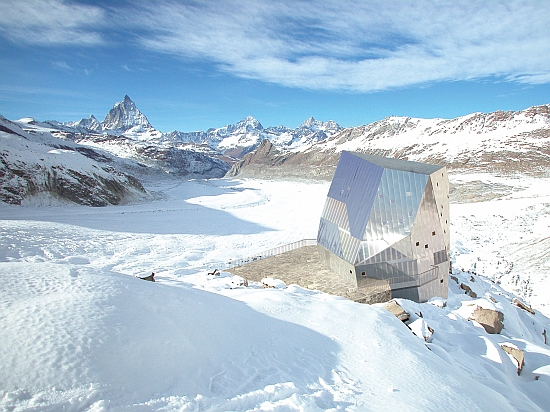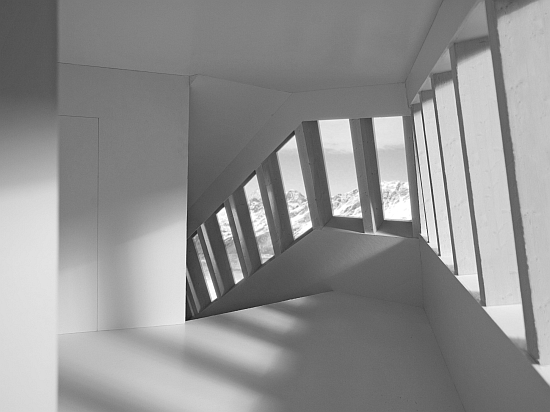
Eco Factor: Shelter powered by solar energy.
Developed by the Swiss Alpine Club (SAC), the new Monte Rosa Hut is an Alpine shelter developed to work effectively at an altitude of 2883m above sea level. Designed to be surrounded by the Swiss Alps, the shelter is a convincing demonstration of state of the art technology working simultaneously with the environment.

Developed with a computer-aided mechanical production process, the shelter can be built using traditional construction methods such as half-timber building with its geometrically complex wood junctions. The most striking feature of the entire architecture is its ability to generate renewable electricity. The facet-like, metallic skin is studded with photovoltaic panels that supply the building with the necessary operational energy.

A spiral-shaped glass band that follows the sun and conducts passive energy into the dining room and peripherally ascending cascade staircase is wound around the whole building and presents the guests with an impressive landscape panorama.

The materials used for the construction of the shelter are kept lightweight, so that a lesser number of helicopter trips are needed to transport the sculpture to the mountains and substantially cut on-site building time. The architects believe that the Monte Rosa hut relies completely on its own energy production, water collection and systems for treating solid waste and waste water. As a result the CO2 emissions will be less than one third compared to existing alpine huts.
The Dark Side:
The cost of building such a shelter at sea level and then transporting it to the Alps will be too much. Moreover, depending only on solar energy for electricity doesn’t seem to be the answer for a place where climate changes in minutes.
Images Courtesy: HolcimFoundation
Via: HolcimFoundation




